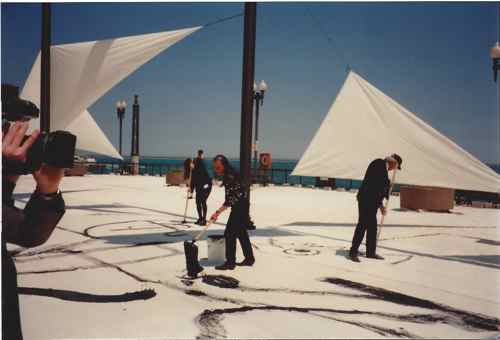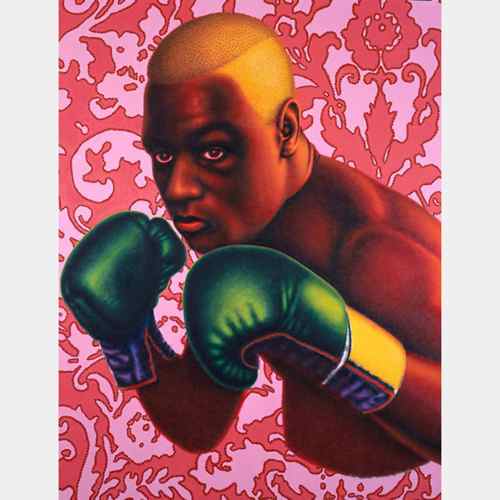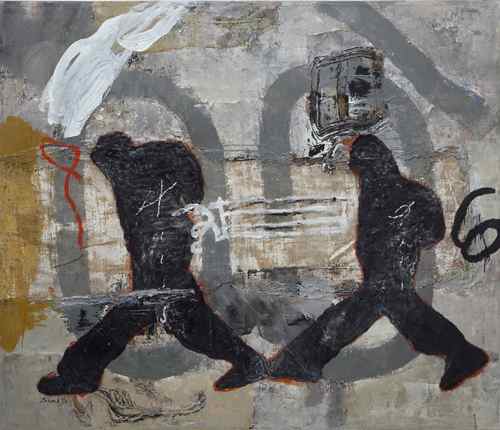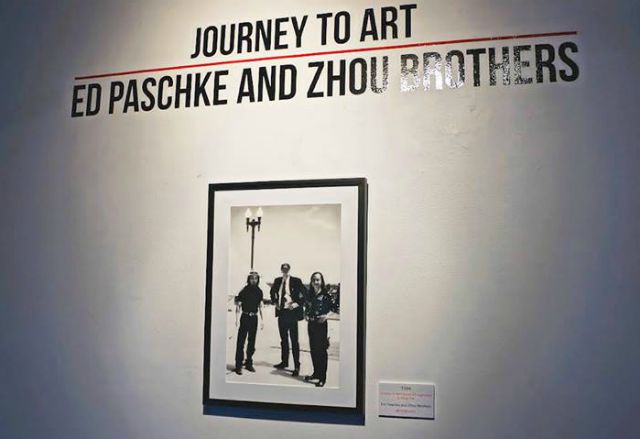A Journey To Art: The Story Of Ed Paschke And The Zhou Brothers
By Carrie McGath in Arts & Entertainment on Jul 26, 2015 7:00PM
In 1986, two artists from China were greeted in Chicago by Ed Paschke, an artist with deep local roots, which resulted in the emergence of a solid bond of friendship and art. ShanZuo and DaHuang Zhou, also known as the Zhou Brothers, were already eminent artists in their homeland and throughout Europe and were poised for equally incredible success in the States after being invited to exhibit here in the 80s. At the time, Paschke was experiencing his own kind of fame, and their meeting and resulting friendship would generate some major waves in the city's art scene and beyond.
"He was one of the most accomplished artists here at the time, [and he is still] one of the greatest artists ever in Chicago," DaHuang said of Paschke, who passed away in 2004. "When we met Ed, we felt like he had a great spirit and we all had a good chemistry. I can feel his energy still."

The Zhou Brothers and Ed Paschke painting at Art Chicago, 1994
The connection is explored in a new exhibition called, Journey to Art: Ed Paschke and the Zhou Brothers, which resulted from a gallery swap between the Ed Paschke Art Center (EPAC) on the north side and the Zhou Brothers' Bridgeport space, Zhou B Art Center, that emphasizes the importance of collaboration.
A fitting tribute to Paschke and the Zhou Brothers' collective art journey, these exhibits, which were on view through July 21st, gave viewers a superb perspective on the work each created. "Showing Ed Paschke's [art] in our gallery had a special meaning. He was our friend and a great artist," remarked ShanZuo when we caught up with him and DaHuang at Zhou B. The two brothers went on to speak about how the recreation of Paschke's studio at the EPAC is a wonderful and dynamic highlight of the Paschke Center. "You can see in the recreation how involved he was an artist and how much joy he had in this creative space," said ShanZuo. DaHuang added, "It is one of the nicest things to happen for Ed."
Upon first glance, the work of the Zhou Brothers and the work Ed Paschke look wildly different and may lead one to wonder if there was any cross influence among the three of them at all. Paschke's work is electric and kinetic; the Zhou Brothers' work is abstract and heady with a subdued palette.
There is a visible difference in mediums, source material, palette and aesthetic—and their approach differs, too. While Paschke used source material such as Maxwell Street Market scenes and burlesque dancers in Chicago clubs, the Zhou Brothers turned to philosophical notions and raw, organic imagination akin to a stream of consciousness. "The conflict is to make the work more mysterious. You don't know why," said ShanZuo. "The most important thing for art is not to explain the situation, or explain the feeling. It is to create a [work] that asks, 'Why?'"

Ed Paschke Untitled (also called 'Almost Finished Boxe'), oil on linen, 50" x 60"; 2004
Harmony and conflict is central to all three artists, however different the elements may appear initially. A work like Paschke's Untitled (also called 'Almost Finished Boxe') is a dazzling example of this dichotomy. A boxer, ready to deliver a punch, is positioned in front of a congenial wallpaper-like backdrop. He is red, expressing rage, while whimsy of the floral pattern behind him gives the piece conflict, however ironic and humorous it may be.
By contrast, the Zhou Brothers' abstract work has very little of the representational edge that Paschke often employed. Instead, their work is born out of imaginative thinking that is very much encrusted with philosophical renderings. The Travelers is an earth-hued mixed media canvas that gesticulates within an urban movement. Here, the harmony lies in the two moving figures while the backdrop evokes a kinetic conflict even while there is an aura of calm with the implication of deep contemplation.

Zhou Brothers, Travelers, mixed media; 1994
One of the most significant intersections of the three came in 1994, at Navy Pier's Art Chicago. The Zhou Brothers commenced the fair with a blank 30,000-square-foot canvas and invited Paschke to contribute to it. "[He] added his very signature mark to the painting," recalled DaHuang. The large installation became illustrative of the significant relationship the brothers had with Paschke and the city of Chicago in general as other artists and the public were encouraged to add to the canvas. And the city had never seen anything like it before—or probably since. At the ribbon cutting, a helicopter circled Navy Pier capturing photos and video of the monumental event. For the Zhou Brothers, it candidly showed what collaboration could bring to a work of art.
As our conversation started to wind down, DaHuang quietly reminisced about wanting to bring Paschke to China. "But he left us too soon." ShanZuo added, "We had a very different style, color and philosophy, but there was always that chemistry." Out of that chemistry was born a mutual respect. The resulting work by these significant and alluring artists continues to ring on, right along with Paschke’s deep legacy.
